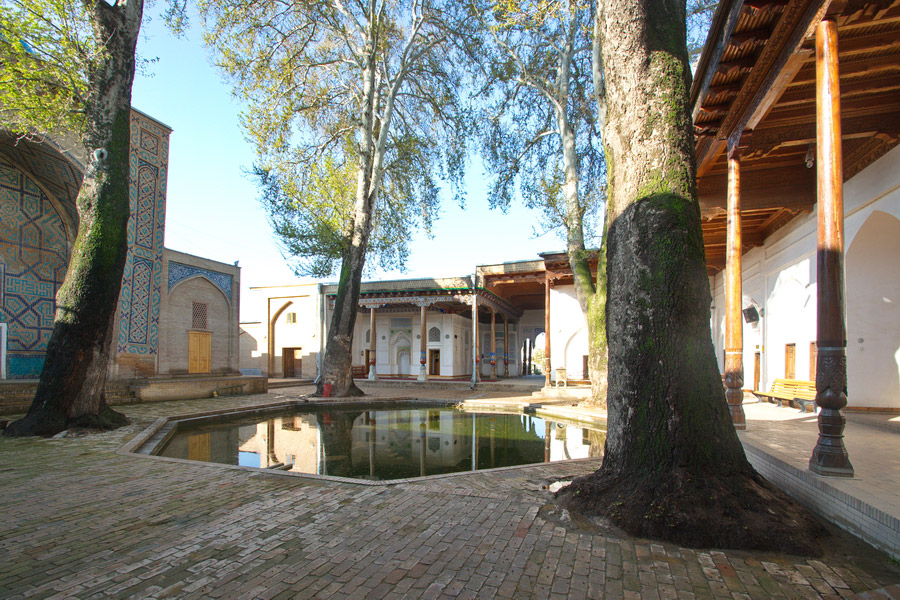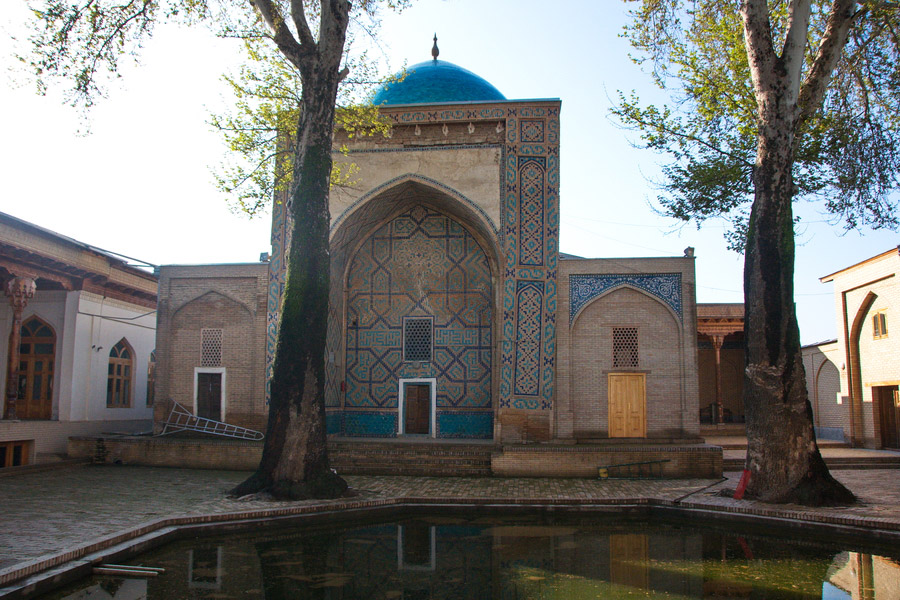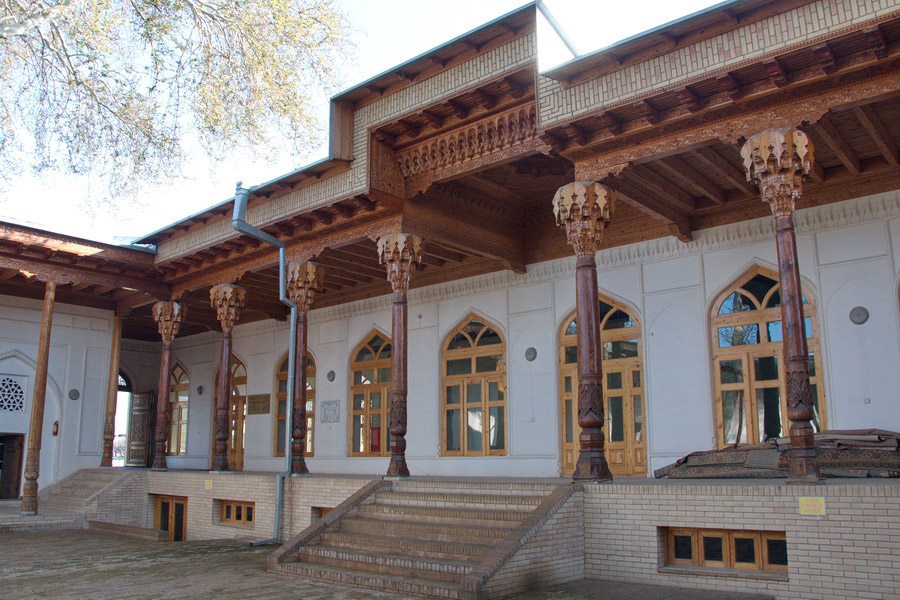Abdi Darun Complex
The Abdi Darun complex is an ancient shrine located on the eastern side of the Samarkand fortress wall. Part of its name "darun" translates as "inside". Initially, various buildings appeared around the tomb of al-loma Abd Maziddin, who lived in the 9th century AD, which later turned into an architectural shrine.
In the center of the ensemble is the largest building, the khanaka, built in the 15th century. Its roof, dome and wall decorations indicate that it was a product of the architecture of the Ulugbek period. The shrine served as a public mosque. Inside the inn is the grave of the saint. The premises around the courtyard and the mosque on the west side date back to the 19th century. Among the decorations of the mosque are the names of the masters.
As a result of the renovation, the original appearance of the mausoleum building has changed. Since the pond in the middle of the courtyard was located above the spring, the water in it remained unchanged at any time of the year — winter and summer — and was considered therapeutic among the population.
The Abdi Darun architectural ensemble is the most striking example of a fascinating combination of individual structures in an enclosed space with nature - with century—old trees and the calm waters of a pond. The ancient architects, creating this complex, were able to achieve the golden mean in the combination of the living with the inanimate. They combined comfort and compactness in the architectural monument, combining unequal parts into one whole. The work of the masters once again confirms the expression that everything ingenious is simple in its embodiment. A good craftsman who knows his craft thoroughly never leaves the desire to create a new one, more beautiful than his previous brainchild. An unusual ancient complex enlivens a large number of green spaces, reflected in the calm waters of the pond. The ensemble surprises with its amazing precision and precise unity of color shades and shapes of the surrounding landscape.





















